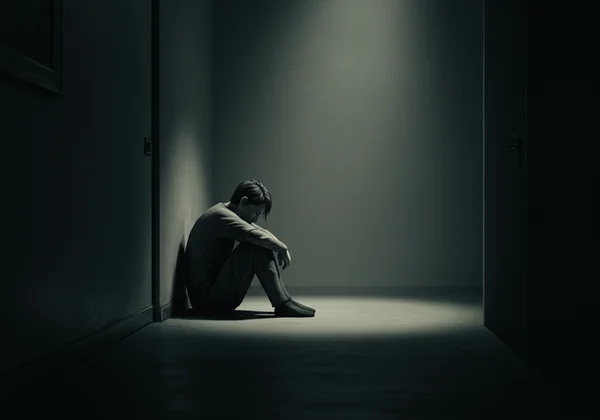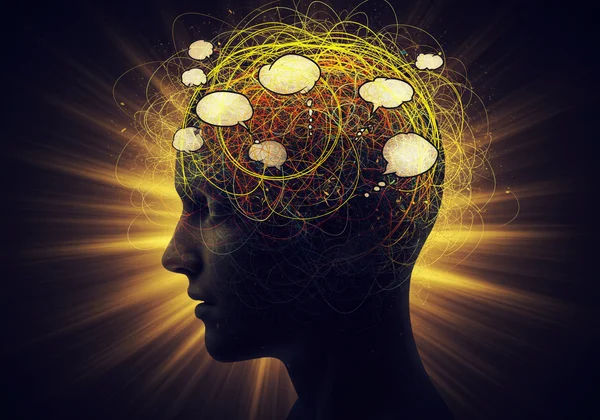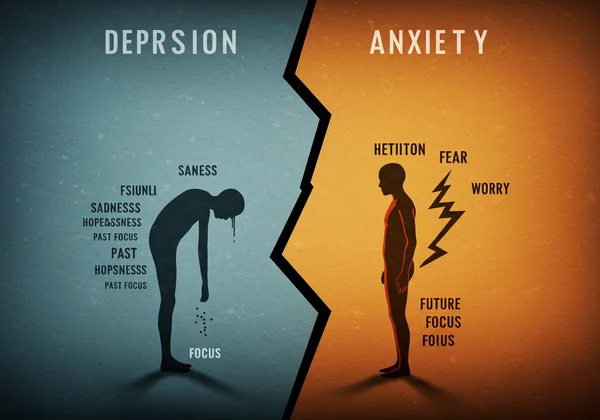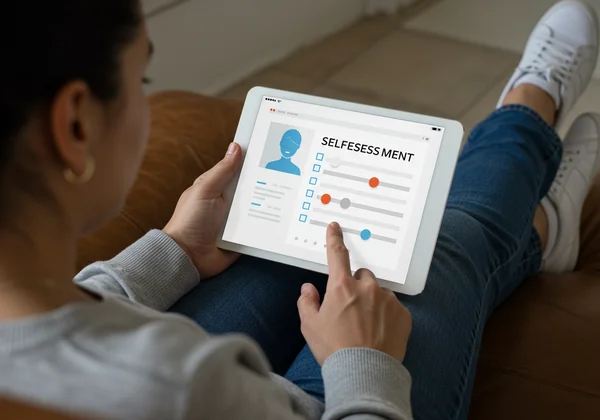Depression vs. Anxiety: Understanding Symptoms & BDI Test Insight
If you've been navigating a confusing mix of overwhelming emotions, persistent sadness, or constant worry, know that you're not alone in this experience. It's incredibly common to struggle with understanding the subtle differences between depression and anxiety, and gaining clarity is the vital first step towards feeling better. This guide will help you understand the distinct symptoms, common overlaps, and how tools like the BDI test can provide valuable insight. Gaining this understanding can empower you to seek the right support and begin your journey toward emotional well-being.
What is Depression? Unpacking Core Emotional & Physical Symptoms
Depression is more than just a passing case of the blues; it's a persistent mood disorder that affects how you feel, think, and handle daily activities. Its symptoms can be deeply impactful, often creating a heavy fog that colors every aspect of life. Understanding these signs is crucial for recognizing when you or someone you care about might need support. A great way to begin this exploration is through a structured mood self-assessment.
More Than Just Sadness: Recognising key depressive signs
While profound sadness or a feeling of emptiness is a hallmark of depression, its reach is much broader. One of the most telling indicators is anhedonia—the loss of interest or pleasure in activities you once enjoyed. Hobbies, social gatherings, and even favorite foods can lose their appeal.
Other core symptoms include persistent feelings of worthlessness or excessive guilt, difficulty concentrating or making decisions, and significant changes in appetite or weight. Physically, you might experience unexplained fatigue, a lack of energy that sleep doesn't fix, or even physical aches and pains without a clear cause. These depressive signs create a complex picture that goes far beyond simple sadness.
How Depression Affects Daily Life and Functioning
The impact of depression on daily functioning can be severe. At work or school, concentration issues can make it difficult to complete tasks or meet deadlines. Socially, you might withdraw from friends and family, feeling too exhausted or apathetic to engage.
Even basic self-care routines can feel like monumental tasks. The motivation to shower, eat properly, or keep your living space tidy can vanish. This disruption to daily life is a key reason why understanding your mood is so important. Taking a confidential BDI test online can offer a preliminary look at these patterns.

What is Anxiety? Understanding Persistent Worry & Fear Patterns
Anxiety is characterized by intense, excessive, and persistent worry and fear about everyday situations. Unlike the occasional stress we all feel, anxiety disorders involve feelings that are difficult to control, are out of proportion to the actual danger, and can interfere with daily life. It often feels like your mind is stuck in a future-oriented state of high alert.
The Distinct Physical and Mental Manifestations of Anxiety
Anxiety has a powerful mind-body connection. Mentally, it involves racing thoughts, difficulty concentrating, irritability, and a constant sense of dread or impending doom. You might find yourself catastrophizing, where you imagine the worst-case scenario in any situation.
Physically, the symptoms can be just as distressing. They often include a pounding heart, sweating, trembling, shortness of breath, and stomach upset. These are manifestations of the body's "fight or flight" response being activated inappropriately or too frequently. Recognizing these physical and mental signs is a key step toward managing them.
Common Ways Anxiety Disorders Present in Your World
Anxiety can manifest in several ways, from Generalized Anxiety Disorder (GAD), involving chronic worry about a range of topics, to panic disorder, characterized by sudden episodes of intense fear. Social anxiety involves an overwhelming fear of social situations, while phobias are tied to specific objects or situations.
In your daily world, this might look like constantly replaying conversations in your head, avoiding social events, or procrastinating on tasks due to a fear of failure. It's a persistent hum of "what if" that can make it hard to feel present and at peace.

Depression vs. Anxiety: Key Differences in Experience & Focus
While they often coexist, depression and anxiety have fundamental differences in their core emotional experience and how they shape your thoughts and behaviors. Understanding this distinction is vital. Many people find that a tool like the Beck Depression Inventory can help clarify the presence of depressive symptoms, providing a clearer starting point. You can try the BDI test for free to gain some initial perspective.
Core Emotional Drivers: Sadness vs. Fear
At its heart, the primary emotional driver of depression is sadness, hopelessness, and a focus on the past or present. Thoughts often revolve around past failures, feelings of worthlessness, or a bleak outlook on the current situation. The energy is typically low, leading to lethargy and apathy.
In contrast, the core emotional driver of anxiety is fear, worry, and a focus on the future. Thoughts are consumed with potential threats, negative outcomes, and what could go wrong. The energy is often high and scattered, leading to restlessness, agitation, and a feeling of being on edge.
Behavioral & Cognitive Distinctions in How You React
Behaviorally, depression often leads to withdrawal and avoidance. A person might isolate themselves, stop engaging in activities, and have trouble mustering the energy to act. Cognitively, thought patterns are often self-critical and pessimistic.
Anxiety, on the other hand, frequently drives safety-seeking behaviors. This could mean avoiding feared situations, seeking constant reassurance, or developing compulsive rituals. Cognitively, there's a tendency to overestimate threats and underestimate one's ability to cope. These behavioral distinctions are important clues.

Why Anxiety & Depression Often Overlap: Understanding Comorbidity
It's very common for someone to experience both depression and anxiety simultaneously, a condition known as comorbidity. One condition can often trigger or worsen the other. For instance, the constant stress and fear from an anxiety disorder can be exhausting and demoralizing, eventually leading to feelings of hopelessness characteristic of depression.
Shared Symptoms: Sleep Issues, Irritability, & Concentration Challenges
One of the reasons these two conditions are so often confused is their significant overlap in symptoms. Both can cause severe sleep issues, whether it's insomnia from a racing mind or oversleeping due to fatigue. Irritability and difficulty concentrating are also common to both, making it hard to pinpoint the root cause without a deeper look. Taking an initial step, like using a free depression test, can help parse these symptoms.
The Intertwined Nature of Mood & Worry in the Brain
From a neurological perspective, depression and anxiety share some underlying biological pathways. Neurotransmitters like serotonin and dopamine, which regulate mood, sleep, and appetite, play a role in both conditions. The brain regions responsible for processing threats and managing emotions are also involved. This intertwined nature helps explain why they so often appear together and why treatments can sometimes address both.
Taking the Next Step: Gaining Clarity & Seeking Support
Understanding the nuances between depression and anxiety is an empowering act of self-awareness. It moves you from a state of confusion to one of clarity, which is the foundation for seeking effective help. This journey often starts with a single, manageable step.
Self-Assessment for Initial Insight: Tools Like the BDI
While not a diagnostic tool, a scientifically validated screening instrument can provide valuable initial insights. The Beck Depression Inventory (BDI) is a respected self-assessment that helps quantify the severity of depressive symptoms. It can provide a structured snapshot of your emotional state, making it easier to see patterns you might have missed. This objective data can be a powerful starting point for a conversation with a professional. You can gain clarity now with a confidential test.

When and How to Consult a Mental Health Professional
If your symptoms are persistent, distressing, and interfering with your daily life, it is crucial to consult a mental health professional. A therapist, psychologist, or psychiatrist can provide a proper diagnosis and work with you to create a personalized treatment plan. Remember, seeking professional help is a sign of strength, not weakness. It's the most effective way to navigate your mental health journey and move toward lasting well-being.
Your Path Forward: Embracing Clarity and Support
Embarking on the path to understanding your emotional landscape, whether it involves depression, anxiety, or both, is a profound act of self-care. Remember, a self-assessment like the BDI test offers valuable initial insights—a compass rather than a definitive map—to help you discuss your unique experiences with a mental health professional. Taking this proactive step to explore your mood is a testament to your resilience, guiding you toward lasting well-being and a richer life. We're here to help make that exploration easier.
Frequently Asked Questions About Depression, Anxiety, & Self-Assessment
How do I know if I have depression or anxiety, or both?
The key difference often lies in the focus: depression typically involves persistent sadness and a focus on past or present hopelessness, while anxiety involves excessive fear and future-oriented worry. If you experience both a lack of energy and pleasure (depression) along with restlessness and a sense of dread (anxiety), you may be experiencing both. The best way to know for sure is to speak with a healthcare professional.
Can the BDI test help me understand if I have anxiety as well as depression?
The Beck Depression Inventory (BDI) is specifically designed to measure the severity of depressive symptoms. However, since many symptoms like sleep disturbances, irritability, and concentration difficulties overlap, your BDI score can still provide crucial information. A high score might prompt a more thorough evaluation with a professional who can then accurately diagnose depression, anxiety, or both. Taking the free BDI test can be an informative first step.
What is a "normal" level of sadness or worry, and when should I be concerned?
Everyone feels sad or worried from time to time. These emotions become a concern when they are persistent (lasting for two weeks or more), intense, and significantly interfere with your ability to function at work, school, or in your relationships. If your emotional state is causing you significant distress and holding you back from living your life, it's time to seek support.
What immediate steps can I take if I feel overwhelmed by these symptoms?
If you feel overwhelmed, first focus on your breath. Practice slow, deep breathing for a few minutes to help calm your nervous system. Try a grounding technique, like naming five things you can see, four you can touch, three you can hear, two you can smell, and one you can taste. Reach out to a trusted friend or family member. Most importantly, if you are in crisis or having thoughts of harming yourself, please contact a crisis hotline or emergency services immediately.